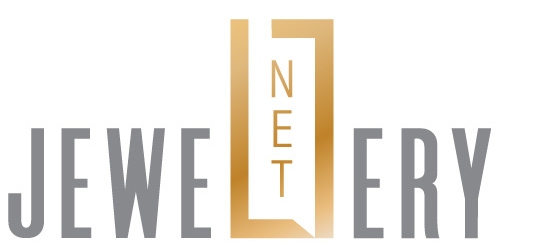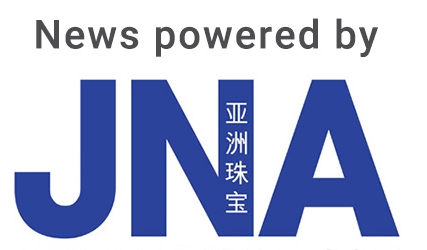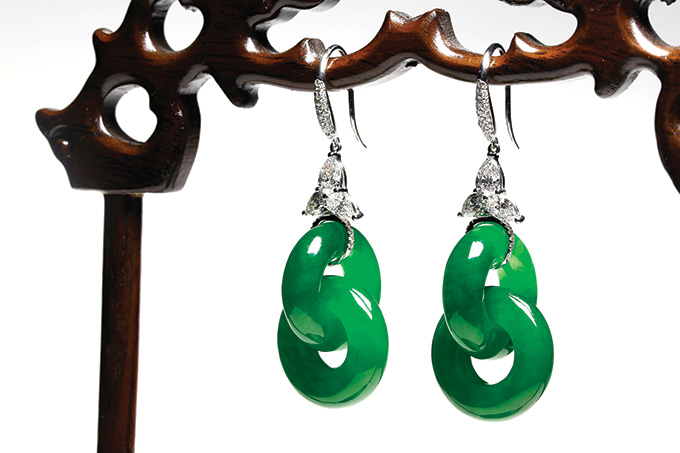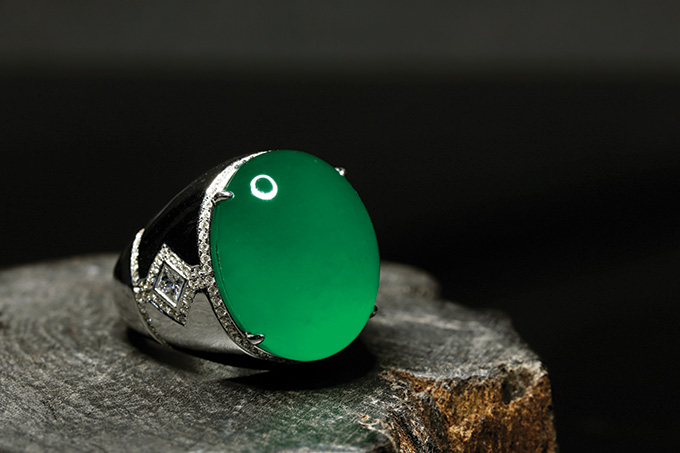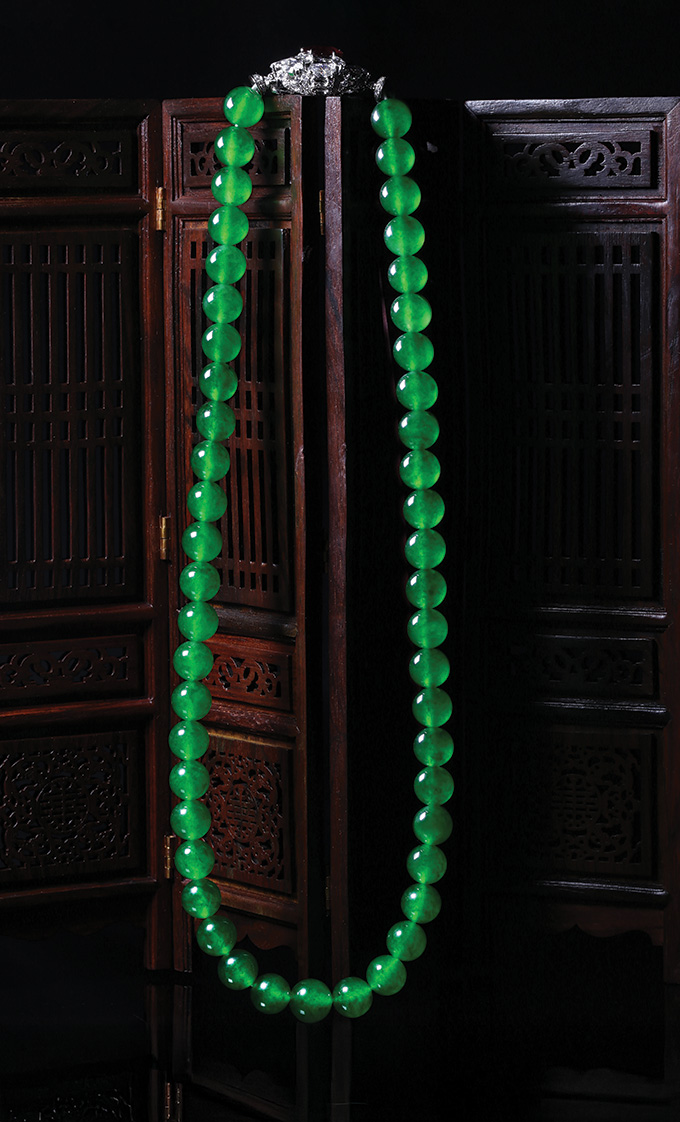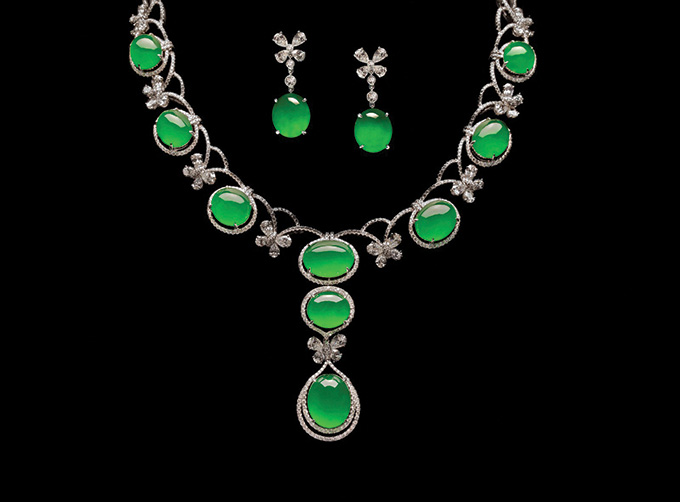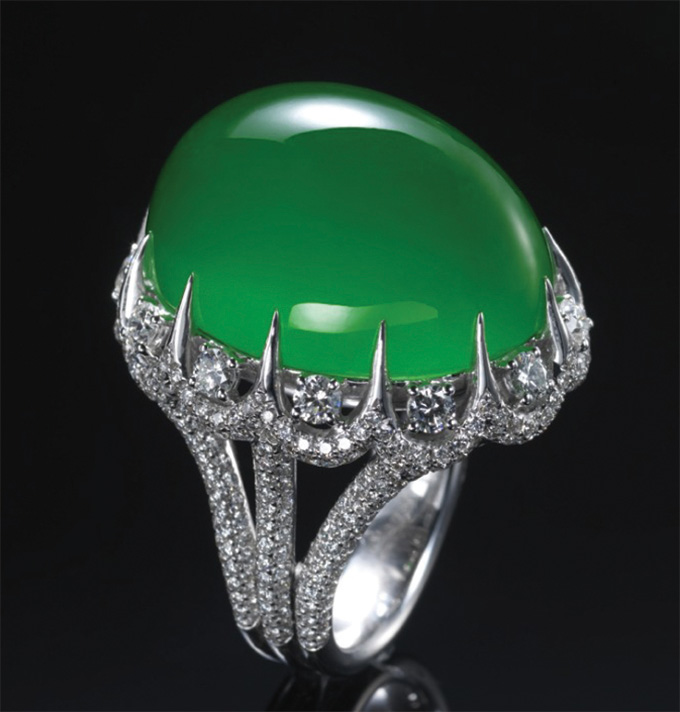The classic yet versatile jadeite remains highly coveted in China, where modern designs, e-commerce and enhanced industry-wide standards are driving demand for the green gem.
This article first appeared in the JNA July/August 2025 issue.
Few gemstones carry the rich cultural and historical significance of Fei Cui, popularly referred to as jadeite. Revered as a symbol of wealth, status and prosperity, especially in China, jadeite continues to resonate with the consumers of today. With the rise of a younger generation of buyers alongside more innovative designs, China’s jadeite market is entering a new era, characterised by a fusion of tradition and modernity.
According to the 2024 China Jewellery Industry Development Report by the Gems and Jewelry Trade Association of China (GAC), the country’s retail sales of jade jewellery, including jadeite, amounted to RMB98 billion (around US$13.6 billion) in 2024. This accounted for 13 per cent of total jewellery sales in China.
Government data further showed that jade jewellery retained its position as the second-largest jewellery category in the country, outranked only by gold jewellery.
The rise of e-commerce as a sales and marketing platform, specifically livestreaming and short-form video on social media, is further fuelling sales of jadeite jewellery in China, according to a 2024 China Jadeite Industry Development White Paper jointly released by GAC, the New Media Association of Dehong Dai and Jingpo Autonomous Prefecture, and jadeite jeweller Fei Cui Wang Chao.
China-based New Media Association of Dehong Dai and Jingpo Autonomous Prefecture is an organisation that promotes a healthy and regulated use of “new media” such as livestreaming and social media, among other channels.
Investment appeal
A treasured gemstone in China, jadeite enjoys relatively steady demand, with the middle- to premium-quality segments seeing the strongest performance in recent years. This can be attributed to the growing interest from younger customers and affluent collectors, according to industry players.
Modern buyers have also become more discerning than ever and are drawn not only to jadeite’s aesthetic allure but its investment value.
Jadeite’s rarity, cultural significance and enduring value make it a top choice for collectors and investors alike,
according to Stanley Chu, managing director of jadeite specialist On Tung Jewellery Co Ltd and vice chairman of the Hong Kong Jade Association.
The green gemstone’s investment appeal is further supported by price resilience during economic downturns. “Prices of top-quality jadeite increased around 20 per cent on average over the last few years,” said Chu.
Denise Adelaide Sjuman, director of Unique Brilliant Ltd, which specialises in rare gems and fine jewellery, noted that value is a key factor in clients’ purchasing decisions.
“Buyers prefer a piece of jewellery that will either retain or increase its value over the years, or even decades,” explained Sjuman.
Exceptionally high-quality jadeite such as “imperial jade,” continues to fetch impressive prices at auctions and retail markets. Chu remarked, “Cabochon jadeite in particular is gaining traction.”
In terms of jewellery designs, the trend is shifting towards a more refined look, he continued, adding that collectors prefer minimalist, sleeker designs. The highlight of the piece should be the jadeite’s distinct qualities.
“While diamond halos remain a popular design in jadeite jewellery, there have been some changes in the details,” stated Chu. “For instance, we are seeing more fancy cuts as opposed to round diamonds, which were prevalent in the past. Also, 18-karat yellow gold is in the spotlight now, replacing 18-karat white gold.”
Younger consumers
According to the 2024 China Jadeite Industry Development White Paper, jadeite jewellery consumption by more mature consumer segments showed an upward trajectory in 2024 compared to 2023, particularly in the jadeite ring, necklace and bracelet categories.
Interestingly, younger consumers aged between 31 and 40 accounted for nearly 50 per cent of overall consumers.
Chu of On Tung revealed that his company’s primary clientele falls within the 35- to 50-year-old range. Currently, majority of On Tung’s clients are from China, Hong Kong, Taiwan and Southeast Asia.
“A great deal of buyers showed more interest in contemporary jadeite jewellery designs tailored to a younger demographic,” said Sjuman of Unique Brilliant, noting that she receives a high number of requests for designs focusing on jadeite’s natural beauty.
The white paper also revealed that high-end jadeite remains a favourite among affluent buyers while trendier options that appeal to younger, fashion-forward consumers are also on the rise. This dual demand ensures that jadeite will continue to thrive as a modern jewellery piece.
“To win over the younger generation of consumers, it is crucial for the jadeite industry to embrace elements associated with modern cultural trends and create jewellery designs that resonate with their lifestyle and aesthetic preferences,” the white paper stated.
Challenges and opportunities
The jadeite sector faces its share of challenges, particularly in sourcing rare and high-quality raw materials, Sjuman of Unique Brilliant and Chu of On Tung noted.
Chu explained that Myanmar, the world’s main source of high-quality jadeite, continues to grapple with political instability, which has disrupted supply chains and driven costs up. This resulted in a scarcity of premium jadeite, pushing prices higher and constraining the gems' availability in the market.
“Ongoing economic uncertainties also inevitably affected buyers’ luxury spending. However, we are firm about the price of premium-quality jadeite. Collectors know the value of these gemstones and are willing to invest,” he said. Chu is optimistic about prospects in the jadeite trade, adding that there is progress in developing an international standard for jadeite.
The World Jewellery Confederation (CIBJO) has been actively working on a Fei Cui Guide, with the aim of establishing clear nomenclature, trading standards and full disclosure requirements for Fei Cui materials – addressing the complexity of jade’s mineral components such as jadeite, omphacite and kosmochlor.
“The Fei Cui Guide is expected to be ready by the end of 2025. This initiative will help further promote trade and business in the jadeite sector,” Chu said.
